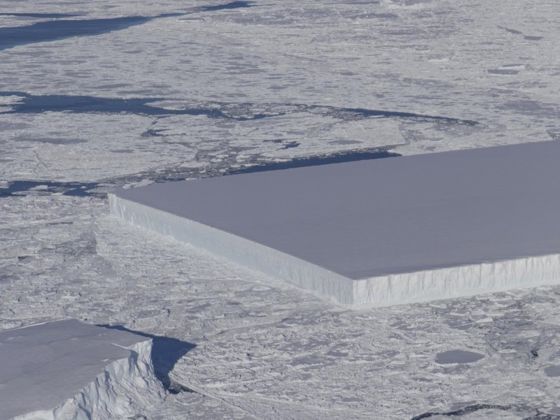When we think of icebergs, we imagine jagged towers of ice, like frozen mountains coming out of the sea. That’s why this particular iceberg, shaped like a perfect rectangle with 90-degree angles, looks like such an anomaly. It was discovered near the east coast of the Antarctic peninsula by NASA’s IceBridge aircraft, near the Larsen C ice shelf. According to NASA’s tweet, the iceberg’s “sharp angles and flat surface indicate that it probably recently calved from the ice shelf.” The iceberg is around 130 feet tall and one or two miles long, although compared to the majority of Antarctic Sea’s ice, it’s actually rather small.

This Iceberg Found in the Antarctic Sea Is a Perfect Rectangle
From yesterday’s #IceBridge flight: A tabular iceberg can be seen on the right, floating among sea ice just off of the Larsen C ice shelf. The iceberg’s sharp angles and flat surface indicate that it probably recently calved from the ice shelf. pic.twitter.com/XhgTrf642Z
— NASA ICE (@NASA_ICE) October 17, 2018
Kristin Poinar, geophysicist at the University of Buffalo, explained to National Geographic that since Larsen C is a large ice shelf, “the ice has time to spread out and become perfectly flat.” So it’s no surprise that this broken-off piece looks like a large, symmetrical rectangle. Eric Rignot, research scientist at NASA’s Jet Propulsion Lab, echoes this explanation. “The ‘bergs detaching from Larsen C are so big,” he says, “they look perfectly rectangular or with linear features because they were created from rifts that run across the ice shelf for hundreds of kilometers straight.”
Larsen C is the last surviving member of the Larsen ice shelf family. Larsen A collapsed in 1995, and Larsen B in 2002. Scientists are monitoring the effects of climate change on Larsen C, afraid that as more icebergs break from it, a similar collapse could be imminent. In 2017, a trillion-ton iceberg — the size of Delaware — broke off of Larsen C and was one of the largest ever recorded.
H/T: National Geographic